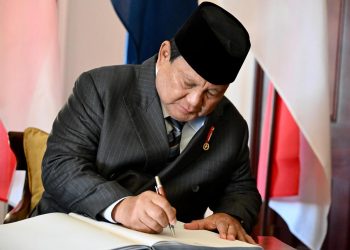Jakarta, Indonesia Sentinel — Indonesia population has surpassed 286 million in the first half of 2025, according to new data released by the Ministry of Home Affairs. This marks an increase of approximately 1.7 million people since December 2024.
“As of the end of June 2025, Indonesia’s population stood at 286,693,693,” said Teguh Setyabudi, Director General of Population and Civil Registration at the Ministry, during the launch of the National Population Development Master Plan 2025–2045 at the National Development Planning Agency (Bappenas) in Jakarta on Friday, July 11.
Teguh noted several key trends from the latest data, including a significant gender gap. “The number of male residents exceeds that of females by roughly 2.6 million,” he said.
Teguh stressed the importance of digitalizing population data as part of Indonesia’s modernization efforts, emphasizing its role in both national and regional development planning. He added that over 7,000 institutions currently access the ministry’s demographic database.
“We are committed to contributing to the development of digital public infrastructure, especially to support social protection programs like Perlinsos and the Keluarga Penerima Manfaat (KPM) of the Family Hope Program (PKH), which is expected to launch in August 2025,” he said.
Read Also:
Indonesia Sets 2026 Macroeconomic Assumptions for Draft State Budget
Coordinating Minister for Human Development and Cultural Affairs Pratikno urged policymakers to turn the country’s demographic bonus into a development dividend. He outlined three key focus areas: economic well-being, social welfare, and environmental sustainability.
On the economic front, he highlighted the need to prepare a skilled and productive workforce while maintaining robust economic growth. Socially, he emphasized the importance of improving healthcare, education, and family welfare. Environmentally, he raised concerns over population distribution and ecological sustainability.
“Urbanization is one of our major challenges. Around 50% of our population now lives in urban areas, and by 2050 that figure could reach 70%,” Pratikno warned. “Urban centers drive GDP growth, but they also bring a host of issues — from housing, access to clean water, healthcare, security, crime, to pollution.”
He called for more equitable population distribution to ensure demographic balance, especially with an aging population on the horizon. Pratikno also touched on Indonesia’s fight against stunting, stating that the prevalence has fallen below 20%. However, he noted that President Prabowo Subianto is targeting a further reduction to 14% by 2029.
(Raidi/Agung)

























